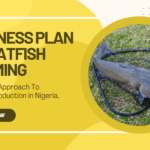With the high rate of business failure, how will a startup survive, grow, and effectively contribute to economic growth? There are proven business growth strategies that can be employed at different phases of growth. Here we will discuss the traditional business growth strategies for small businesses.
Before an individual or a group come together to start up a business, they would usually have some motives behind them. The motive(s) could be one or more of the following:
- proffer solution to needs,
- make profit and amass wealth,
- create employment for the populace,
- compete with existing businesses,
- improve the standard of living of the people,
- reduce the cost of living,
- contribute to economic growth.
Whatever the motive is, at startup, there is so much enthusiasm and passion to drive the business. But over time, as challenges come, and because some businesses are not prepared to face them, they fizzle out. Many small businesses understood that for a business to succeed that they must define an appropriate proposition. With value proposition, talent, and availability of market a business can gain streams of income over time. However, without well-planned business growth strategies, a business may fail or remain stagnant in the long run.
In our post on business models, we discussed value proposition and other terms in greater detail. We also elaborate on 3 business models which you can choose from. We also highlighted that the Business Model Canvas (BMC) is the simplest and most appropriate for any kind of business. Whichever business model you choose to use, it is important you pay attention to your income streams.
How will your business generate income? All business growth strategies do not neglect the income streams. This aspect is key for the survival and growth of any business. There are different revenue models to generating income for a business, depending on which business growth strategies employed. All you need is to choose which model is most appropriate for your business. Which model has been tested and is most effective to guarantee continuous returns, and meet stipulated growth levels?
If a particular model does not work, you can choose another model. You can as well choose more than one revenue model at the same time. Some popular ones include:
- direct product sales revenue model,
- subscription revenue model,
- freemium revenue model (here a customer will upgrade from free to paid package to access more functionalities),
- commission revenue model,
- referral system revenue model, etc.
Each of these revenue models can be broken down into simple and proven models used by businesses like Uniliver, Amazon, Uber, etc. In spite of the revenue model adopted by any small business, there is a need to manage growth in order to succeed. There are different business growth strategies which any small business can pursue, but the traditional business growth strategies are indispensable.
Traditional Business Growth Strategies
Growth is fundamental to every business, because no business starts to fail within the next five years. In business development, there are proven business growth strategies employed by different businesses. These business growth strategies can be classified into:
- intensive, and
- integrative business growth strategies.
Intensive business growth strategies
By intensive we mean rigorous business growth strategies that small businesses can pursue at lower costs and risks. These strategies include:
Market penetration:
This growth strategy enables any business to gain more market share. If a business within a locality serves 35% of the customers, it tries to increase its share. This it will do by selling the same product within the same market. However, you will devise strategies that will make you gain more customers. This might be through price reduction, aggressive advertising, and better customer relationship. As a business owner, think of what to do to gain your competitor’s customers.
Market development:
Let us assume that the market penetration business growth strategy fails, what next? If you have strong competitors that you cannot penetrate within your local market, consider expansion. Here businesses are advised to find new markets for their current products. This may be finding new users of the products or by moving to another locality. Whichever is more effective; simply develop new market to increase sales.
Product development:
In the course of time, technology and habit can change. In the face of these possibilities, a business may fail if it does not innovate. This is where product development or expansion business growth strategies come to play. This strategy entails that businesses develop new products or add new features to existing products. Such products can be sold to existing and new markets.
Product diversification:
In this strategy, a business may create new products for new markets. This strategy may be highly risky for small businesses, hence I don’t encourage it. But if your business plans very well and studies the new market, it is a good strategy to grow sales.
Alternative channels:
A business may use other distribution channels to grow its sales. New channels may be through agents, home delivery or online sales. Through the new channels, the business can grow its market share and penetrate other markets effectively.
Integrative business growth strategies
By integrative growth strategy we mean merging and acquisition. Through merging and acquisition, a business can grow its market share as well as capture new markets. However, small businesses may not have the capacity to pursue merging and acquisition. If this be the case, partnership will be recommended to pursue intending growth.
If you choose to grow your business through merging and acquisition, then consider the following options:
Horizontal acquisition:
This is a strategy that sees businesses merge with or buy over other competing businesses. For example, Coca-cola and Cruch or Coca-cola and Limca.
Forward acquisition:
This business growth strategy sees a business buy over one or more of the businesses in its distribution chain.
Backward acquisition:
Sees a business buy over one or more of the businesses in its supply chain.
Outside the above traditional business growth strategies, there are other strategies that have been employed by other businesses. Hubspot discussed the following business growth strategies which any small business can pursue, depending on industry.
- viral loops,
- milestone referrals, etc.
As a startup or small business aspiring to grow, choose a business growth model suitable for your business. In our next article, we will discuss the different stages of business growth to help you manage growth. In order to effectively grow a business, a business should have a unique selling proposition.
Unique Selling Point (USP)
Before we proceed, let us look at the uniqueness of your business. As a startup or small business that wants to grow, it is important you have a competitive advantage. This will enable you to easily establish a market share in already existing market.
How would you achieve this? There are different ways, but in this article, we will discuss the USP.
Defining the USP
USP is an acronym for Unique Selling Proposition. It is a key component of a business’s marketing campaign. USP may be defined as the Unique Perceived Benefit. By this it means the most powerful, dynamic, unique and important benefit of a customer using a business’s product/ service.
It is the core of what makes a product different from other similar products. It defines why a customer should buy a product/ service over a competing product/ service. In other words, it can essentially ‘make or break’ a business, and its chances for long-term success and growth.
In very simple terms, the USP is a business’ slogan. For example, good thinking, good product; …everywhere you go; fresh, hot pizza delivered in 30 minutes or less or it’s free; have it your way. This business slogan or USP can be derived by objectively answering the following questions:
- How can the product or service help or improve a customer’s life?
- What benefits does it offer to customers that other products/service fail to provide?
- Is the product or service easier to use than other products or service on the market?
- Why should a customer do business with you instead of anyone else?
- What can your business guarantee a customer that others cannot?
How to create a USP
Before creating a USP, a business needs to know its target audience and identify the following:
- What is most important to them?
- What are they struggling with the most?
- How can it truly connect to the target audience?
- What is their greatest challenge?
Before you create your USP, understand that they are more than just catchy taglines associated to a business or brand. They are reinforcement tools that help you establish credibility in your market while shaping the foundation of your business. When creating a USP for your product, think of the different ways you can stand out from the competition, including:
- enhanced training tools,
- additional Support options,
- extended guarantee,
- price discounts,
- special offers,
- auxiliary components,
- exclusive features & options,
- valuable bonuses,
- faster delivery,
- better overall service.
Steps to create a USP for effective business growth
The following steps can guide you to creating an effective USP.
- List all the features of the business/ product/ service (what it does).
- List all the benefits of the business/ product/ service. (customer needs satisfied).
- What emotional needs of the customers are specifically met by the product/ service?
- Rank the benefits of the business/ product/ service to the customer according to their order of priority.
- Identify aspects of the business/ product/ service that competitors cannot easily imitate (competitive advantage).
- Consider each benefit in turn and indicate whether these benefits are industry standard (S). That is if benefits are peculiar to all competing suppliers’ (competitors), or different (D). That is if benefits are unique to the business within the industry (competitive advantage). If you encounter problems with this you can contact us for assistance.
- If all the benefits are rated ‘S’, then this indicates that there are no obvious differences between the products or services and those of competitors.
- If there are differences, then create phrases about the unique product/ service that are short, clear, and concise. It should answer the customer’s primary question: “what is my benefit?”
If you can create a successful USP, then you are on the path of growth.
Conclusion
Businesses are established every day all over the world, yet the same categories of businesses fail each day. There are lots of reasons for business failure including not being able to manage growth. We discussed the traditional growth strategies any small business can implement in order to grow. A stagnant business is as good as dead. Hence, endeavor to implement one of these business growth strategies in order to distinguish yourself from others. When you are outstanding people will associate with you. What do you have to say?





